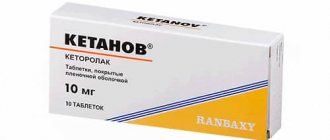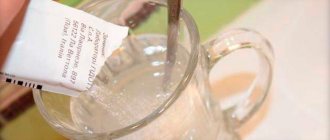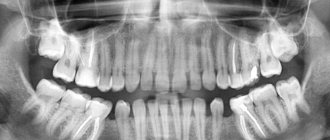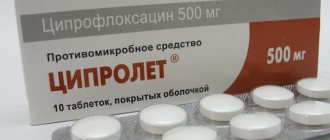Warehouse relocation to Europe. We sell hepatitis C drugs in Russia at the purchase price - warehouse liquidation Go to website
When choosing a drug, as a rule, preference is given to the most powerful one, which can completely eliminate the pathology in a minimum period of time. Is this the right decision?
When prescribing a drug, a number of factors are taken into account
Doctors say no. In order to cope with the disease, it is important to choose not the strongest, but the most suitable. This takes into account the specificity of the pathology, the patient’s age, his condition, and so on. Today, a huge number of drugs are known that have an anti-inflammatory effect. Experts often prescribe Nimesil. This is one of the most effective drugs used for prostatitis.
Table of Contents
Features of the drug
Nimesil is a non-steroidal drug with pronounced anti-inflammatory properties. The active component is nimesulide. Immediately after entering the body, it is perfectly absorbed by the digestive system, reaching maximum concentration within a couple of hours. By this time, the blood plasma contains more than 97% of the dosage.
The drug accumulates in liver tissue and is excreted in bile in an amount of 30%. Most, namely half of the dosage, is excreted by the kidneys. The main distinguishing feature of the drug is that it behaves the same both in people with healthy kidneys and in patients with mild or moderate impairment of their function. This significantly expands the scope of application of the product.
The drug has a wide range of applications
Effect of the drug
The effect of the drug is based on the ability of nimesulide to inhibit the production of prostaglandins. They are the ones who provoke the launch of the inflammatory process with corresponding symptoms. As a result, Nimesil has anti-inflammatory, antipyretic and analgesic effects.
Unlike drugs used previously, this drug affects only those prostaglandins that are located at the site of inflammation. As a result, neither the kidneys nor the liver are affected by the course of treatment used.
The effect of the drug appears a few minutes after ingestion. As a result, pain is reduced and signs of inflammation are eliminated. The maximum effect from the first dose will appear within an hour and a half after ingestion. The effect lasts for six hours. According to statistics, there have not yet been cases of patients claiming no effect after treatment with this drug.
Thus, thanks to its composition, the drug today is the most powerful, but at the same time safe means for eliminating the inflammatory process of almost any localization. The only limitation so far is age: it is not prescribed to children.
Nimesil allows you to relieve pain in the shortest possible time and have an anti-inflammatory effect
Which medication is better and more effective Nimesil or Paracetamol
Among the huge number of pain-relieving medications, the most popular and widely available are non-narcotic analgesics with pronounced antipyretic, anti-inflammatory and analgesic effects. These include the relatively “young” medicine “Nimesil” and the well-known paracetamol. It is worth understanding what the difference is between them, and in what cases they should be taken.
Nimesil: description, action, purpose
Nimesil is used as an analgesic, anti-inflammatory and antipyretic agent. The drug is a non-narcotic analgesic that stops the biosynthesis of prostaglandins.
The main active component is nimesulide , which belongs to the sulfonamides. The medicine is intended for the treatment of acute pain, mainly due to osteoarthritis, muscle and joint inflammation.
However, you should not take it for a long time, as the hepatotoxic effect is pronounced.
The drug is prohibited for children under 12 years of age, women during pregnancy and should be used with caution during lactation.
The medicine quickly begins to act after administration. After 2-3 hours, the required concentration accumulates in the blood, and the patient feels relief.
Nimesulide has not only an analgesic effect, but also an anti-inflammatory effect . The drug, penetrating into the source of pain, relieves and “heals” the affected area. At the same time, the antipyretic property is expressed to a lesser extent.
You should not use this medicine for fever due to severe side effects.
Overdoses and long-term use of the drug can have a detrimental effect on the body. The following system malfunctions are possible:
- Allergic reactions.
- Hematopoiesis disorder.
- Indigestion.
- Blurred vision.
- Nervous system disorders.
- Dyspnea.
- Disorders of the urinary system.
Before use, the etymology of the disease should be identified so as not to cause unnecessary harm to the body.
Paracetamol: description, action, purpose
Paracetamol is considered one of the effective antipyretic and analgesic drugs. The active ingredient paraacetylaminophenol is included in most analgesics. This should be taken into account when buying drugs from different brands, for example, Panadol, Flutabs, Acetofen, Efferalgan and others.
The medicine is approved for almost all categories of people: children, adults, women during pregnancy and breastfeeding. Of course, under the supervision of a doctor and choosing the correct dosage.
This is due to the fact that paracetamol has low toxicity, and methemoglobin is formed in small quantities.
Thus, the transport of oxygen in the blood (hemoglobin level) is not disrupted and the body does not receive excess poisoning.
However, we should not forget that all medications, one way or another, are
harmful to the body .
Large amounts of paracetamol negatively affect kidney and liver function. In addition, its main component has a cumulative effect. This should be taken into account and monitor the dosage and duration of use. The principle of action of the drug is associated with the inhibition of prostaglandin synthesis and the influence on the thermoregulation center in the hypothalamus of the brain. Therefore, paracetamol is one of the best drugs to lower body temperature during fever.
After ingestion, it is quickly absorbed into the blood and begins to act. Relief occurs within 20-40 minutes after use.
Dynamics of improvement in well-being may occur after twice using the medicine.
Despite the large number of advantages, paracetamol does not have a pronounced effect as an anti-inflammatory agent.
Its active components do not work directly at the site of pain, providing a therapeutic effect .
The medicine creates only an analgesic effect. It is better to use the drug for the following indications:
- Fever in infectious and inflammatory diseases.
- Mild and moderate pain syndrome, including headache and toothache, neuralgia, myalgia, arthritis and trauma.
With an overdose or long-term use of paracetamol, side effects are possible: allergies, nausea, vomiting, apathy, negative effects on the kidneys and liver.
Nimesil or Paracetamol: generalities and differences
As described above, both drugs are good analgesics . They belong to non-steroidal anti-inflammatory drugs, providing a therapeutic effect by inhibiting the synthesis of prostaglandins. Simply put, they stop pain receptors.
Both medications are used to treat mild to moderate pain, including headaches, toothaches, muscle injuries, and joint inflammation. However, there are significant differences in the purpose of nimesil and paracetamol.
Nimesil, unlike paracetamol, has medicinal properties . Its active substance has an anti-inflammatory effect directly at the site of pain. Thus, the drug has not only analgesic properties, but also a therapeutic effect on the sore spot. Nimesulide predominantly has a positive effect on slowing the development of osteoarthritis.
Paracetamol has virtually
no anti-inflammatory effect .
Its active substance is selectively involved in the mechanism of pain and fever, but is not synthesized specifically at the site of inflammation.
Thus, paracetamol has a pronounced effect of relieving general pain and fever, but without treating the site of inflammation. It is advisable to take the medicine to reduce body temperature and as an analgesic.
The next important difference between drugs is their
side effects .
Nimesil has a more detrimental effect: the nervous system, vision, digestion, and urinary system are affected. Paracetamol has virtually no extensive negative effects on the body. Long-term use of the drug can lead to renal and liver failure. Nimesil should not be given to children under 12 years of age, taken by pregnant women and with caution during lactation. Paracetamol is approved for adults, pregnant and lactating women, as well as young children.
In what cases should you take nimesil and paracetamol?
When choosing which drug is best to use, you should have a good understanding of its purpose. Nimesil is well suited for pain in the musculoskeletal system, muscle and joint pain. The drug is incompatible with certain medications and for certain diseases. Therefore, it should not be used to treat colds.
Paracetamol is most often used to treat colds and pain of various etymologies, to reduce high body temperature.
In any case, first of all, you should consult with your doctor about the method of treatment and dosage for malaise and pain.
Source: https://vchemraznica.ru/kakoj-medicament-luchshe-i-effektivnee-nimesil-ili-paracetamol/
Indications and dosage
Based on the characteristics of the action, we can highlight the main indications for the use of Nimesil:
- Painful sensations of any localization. Accordingly, for prostatitis, the remedy will help relieve discomfort in the lower abdomen. It is also possible to use the drug after surgery to relieve postoperative pain.
- Infectious processes. This allows Nimesil to be used for infectious prostatitis, as well as in the presence of stones, which also often lead to inflammation of the walls of the gland.
- Diseases of the excretory system. In other words, the drug will help eliminate not only inflammation in the prostate, but will also eliminate all pathological processes in neighboring organs.
- Temperature increase. This property allows the drug to be used in the acute period of the disease with pronounced symptoms.
The daily dosage is 200 milligrams of the active substance. It must be divided into two doses. The powder is dissolved in 100 milliliters of boiled and cooled water until completely dissolved. The prepared composition cannot be stored.
2 sachets of the drug are the norm per day
When treating adolescents under 18 years of age, no dosage adjustment is required. The same applies to patients with mild or moderate renal failure. They can also use the specified treatment regimen.
In patients over 60 years of age, it is important to consider the presence of concomitant diseases. It is also necessary to find out whether other medications are being taken that can enhance or, conversely, reduce the effect of the active components of Nimesil.
The duration of taking the drug is no more than fifteen days. Ideally, the course should be carried out with a minimum dosage and short duration. This will help minimize side effects and negative consequences.
Nimesil and paracetamol compatibility
› Medicine
Nimesil and Paracetamol belong to the group of non-steroidal anti-inflammatory drugs. They have a pronounced antipyretic, anti-inflammatory and analgesic effect.
Nimesil and Paracetamol have a pronounced antipyretic, anti-inflammatory and analgesic effect.
Compound similarities
Both drugs are nonsteroidal anti-inflammatory drugs and exert their therapeutic effects by inhibiting prostaglandin synthesis. Medicines have anti-inflammatory, antipyretic and analgesic effects.
Differences
Paracetamol is the only NSAID that selectively affects the synthesis of cyclooxygenase type 3 (COX-3). This biologically active substance is involved in the mechanism of pain and fever, but unlike cyclooxygenases types 1 and 2, COX-3 is not synthesized directly at the site of inflammation.
Suppression of COX-3 synthesis by paracetamol leads to a decrease in elevated temperature during fever and a decrease in pain, but has virtually no effect on the intensity of the inflammatory reaction directly at the site of inflammation. Therefore, it is advisable to use paracetamol as an antipyretic and mild pain reliever.
Nimesulide, the active ingredient of the drug Nimesil, is a predominant inhibitor of cyclooxygenase type 2 (COX-2).
Suppression of the synthesis of COX-2, with a weak effect on COX-1, distinguishes nimesulide from other anti-inflammatory drugs by a number of positive qualities: less gastro- and nephrotoxicity, less effect on blood clotting.
Another positive quality of the drug is its ability to inhibit the activity of enzymes that damage cartilage cells, which slows the progression of osteoarthritis.
Paracetamol is used in pediatric practice for the symptomatic treatment of pain and fever in children of the first years of life.
In pediatric practice, paracetamol is used for the symptomatic treatment of pain and fever in children of the first years of life. The use of nimesil in children is allowed from 12 years of age.
Is it possible to take Nimesil and Paracetamol at the same time?
The combination of Paracetamol with other non-steroidal anti-inflammatory drugs allows you to obtain a stronger analgesic effect, which can increase the effectiveness of pain relief in the acute phase of diseases accompanied by severe pain (for example, postoperative pain, strangulated intervertebral hernia).
However, simultaneous administration of Paracetamol with nimesulide may increase the risk of hepatotoxicity. Therefore, if it is necessary to use these drugs together, it is necessary to use minimal doses of Paracetamol.
Contraindications
The drugs are contraindicated for use in the following cases:
- individual intolerance to components;
- liver failure;
- renal failure.
Additional contraindications to the use of Nimesil are:
- stomach or duodenal ulcer;
- gastrointestinal bleeding;
- pregnancy and lactation;
- heartburn, nausea, vomiting, diarrhea, abdominal pain;
- type 2 diabetes mellitus;
- cardiovascular failure;
- arterial hypertension;
- childhood.
Paracetamol rectal suppositories are contraindicated for inflammatory diseases of the rectal mucosa.
Contraindications to the use of Nimesil are: stomach or duodenal ulcers, gastrointestinal bleeding.
How to take Nimesil and Paracetamol?
Taking Nimesil is allowed only in adults. The drug should be taken orally after meals. The average daily dose is 200 mg, taken in two doses of 100 mg. To prepare the suspension, you need to pour the powder from the bag into a glass and add warm boiled water. If necessary, you can increase the dose.
The dosage of the drug can be adjusted depending on the severity of the condition and the susceptibility of the patient, as well as for older people.
Paracetamol tablets are prescribed in a dosage of 0.35-0.5 g 3-4 times a day. The maximum permissible single dose for adults is 1.5 g, the maximum daily dose is 3-4 g, for children from 9 to 12 years old it is 2 g, from 3 to 6 years old – 1-2 g.
Paracetamol, in the amount of 60 mg per 1 kg of child’s weight in 3-4 doses. The drug is taken after meals with a sufficient amount of water.
Paracetamol rectal suppositories for adults and adolescents weighing more than 60 kg are prescribed 3-4 times a day in a dosage of 0.35-0.5 g. The maximum permissible single dose is 1.5 g, the maximum daily dose is 3-4 g. For children from 1 month to 3 years, single dose – 15 mg per 1 kg, daily dose – 60 mg per 1 kg of child’s weight. Suppositories are used 3-4 times a day.
For children from 6 to 12 years old, the maximum permissible daily dose is 2 g 4 times.
For children from 3 to 6 years old, the maximum dose per day is 1-2 g, in the amount of 60 mg per 1 kg of child weight, 3-4 times. Paracetamol in syrup form for adults and children weighing more than 60 kg is taken 20-40 ml of syrup (480-960 mg) 3-4 times a day.
Children from 3 to 12 months are prescribed 2.5-5 ml of syrup (60-120 mg), from 1 to 5 years - 5-10 ml of syrup (120-240 mg), from 5 to 12 years - 10-20 ml of syrup (240-480 mg) 3-4 times a day.
Source: https://dermatologpro.ru/info/nimesil-i-paracetamol-sovmestimost/
Contraindications for use
Despite the fact that Nimesil is well tolerated by patients and has virtually no negative effect on vital organs, it is important to consider contraindications to its use. First of all, this is increased sensitivity to the components of the drug. This may include previously occurring reactions, such as rhinitis, bronchospasm, skin rashes that occurred after taking aspirin or other non-steroidal drugs.
You should not take Nimesil at the same time with drugs that can negatively affect the liver, for example, paracetamol or other NSAIDs. Contraindications for use would be acute inflammatory processes in the intestines, in particular Crohn's disease or ulcerative colitis with nonspecific flora.
The use of Nimesil in parallel with Paracetamol is unacceptable
It is not recommended to use Nimesil in patients with a history of bypass surgery. It is forbidden to take the drug in case of severe bronchospasm, viral infections in the acute phase, polyposis, and so on.
The drug should be used with extreme caution in patients with stomach ulcers or a history of bleeding. The latter applies to any localization of pathology, including bleeding of unknown origin.
In addition to the above, this drug should not be used for bleeding disorders, heart failure, hyperglycemia, or renal failure in the acute phase. Temporary contraindications are drug addiction and alcoholism.
When prescribing a drug, it is important to take into account the patient’s age, the fact that similar drugs have been taken previously, the presence of somatic diseases, and so on. Only after assessing the risks of side effects and the benefits of the drug is a decision made and dosages selected.
Description
Nimesil is a non-steroidal anti-inflammatory drug.
It belongs to the class of sulfonamides. Pharmacological form of release in the form of powder or granules used to prepare a suspension for oral administration of 0.1 g. The use of nimesil helps relieve inflammatory processes, pain and hyperthermia.
Taking this drug has a good therapeutic effect when:
- Nimesil belongs to medicines in an affordable price category for severe pain caused by pathology of the musculoskeletal system - radiculitis, osteochondrosis and other ailments.
- Injury.
- Sprains of the ligamentous apparatus.
- Dislocations of articular joints.
- Inflammatory processes in joints.
- Toothache.
- Algodismenorrhea.
- Osteoarthritis with pronounced pain.
- Active stage of mensis.
- Postoperative or traumatic pathologies with infectious and inflammatory etiology.
- Pathologies that are accompanied by a rapid increase in temperature.
Important! Nimesil has a symptomatic effect, relieves pain and inflammation during administration.
The drug is prescribed for a maximum course of 4 days, or as a one-time use for severe pain. When prescribing nimesil, the attending physician evaluates the benefits and the likelihood of side effects when using it.
Nimesil is prescribed for the following indications:
- Inflammatory processes, the course of which is accompanied by severe pain and hyperthermia.
- Pronounced pain in the lumbar spine, bone and muscle tissue, as well as in joints.
- Periodic pain in women during menstruation.
- Nimesil is contraindicated for:
- Intolerance to one or more components of the drug.
- Carrying a child.
- Breastfeeding.
- Severe forms of pathologies of the hepatobiliary system.
- Dysfunctions of the hematopoietic system.
- Inflammatory processes, the presence of ulcers and bleeding of the gastrointestinal tract.
- Hyperergic and hepatotoxic reactions provoked by taking aspirin, nimesulide and other drugs of this group.
- Heart failure.
- Hypertension.
- Diabetes mellitus of any type.
- Children under 16 years of age.
Nimesil belongs to drugs in an affordable price category. On average, the cost of the drug for one sachet in city pharmacies is 24.00 rubles, and the price of a package with 30 sachets is within 710 rubles.
Analogs
The modern pharmacological market provides a number of drugs similar to nimesil.
NimesulideAn anti-inflammatory and analgesic agent that additionally has an antipyretic effect. It has a gentle effect on the production of prostaglandins in the mucous membrane of the stomach and kidneys. Helps reduce the development of neoplasm necrosis factor. Cyprus56
| Name | Active ingredient | Description | Manufacturer country | Price in rubles |
| Nise | Nimesulide | Relieves pain and inflammation during inflammatory processes and injuries of the musculoskeletal system. Not recommended for nursing, pregnant women and children under 12 years of age. Contraindicated for stomach and intestinal ulcers, asthma, kidney and liver failure. | Russia, India | 240 |
| Nimulid | Nimesulide | It is prescribed to relieve pain in joint diseases, inflammation of the ligaments, and muscle injuries. It is not recommended to use the drug if there is a history of gastrointestinal inflammation, diseases of the hepatobiliary system and kidneys, or internal bleeding. In pediatrics it is prescribed from the age of 12. During pregnancy and lactation, taking the drug is prohibited. | India | 243 |
| Nimika | Nimesulide | Has anti-inflammatory and analgesic effects. Prescribed after surgical interventions on ENT organs and pathologies of the upper respiratory tract. It is prohibited to use the drug in the presence of gastric ulcers, aspiration asthma, heart disease, pathologies of the hepatobiliary system, and renal dysfunction. Women carrying a fetus and breastfeeding should not use it. Children are allowed from 12 years old. | India | 204 |
| Nimesan | Nimesulide | Pharmacological form of release in the form of tablets. It is characterized by the presence of a large list of contraindications. It has anti-inflammatory, analgesic, antipyretic and antioxidant effects on the body. | India | 158 |
| Nimid | Nimesulide | Available in the form of tablets, suspensions, granules, gel. It has analgesic, anti-inflammatory and antipyretic effects. Effective in eliminating bronchospasms caused by acetaldehyde and histamine. The drug is quickly absorbed from the gastrointestinal tract. The maximum concentration of the active ingredient in the blood is achieved after a couple of hours. | India | 93 |
| Nimesulide | Nimesulide | Belongs to the category of non-steroidal drugs with anti-inflammatory effects. The difference with Nimesil is very insignificant. It is characterized by analgesic, antipyretic and antiplatelet effects. Promotes selective suppression of cyclooxygenase, stops the production of prostaglandins at the site of inflammation. | Macedonia, Russia | 137 |
| Nemulex | Nimesulide | Promotes rapid relief of pain. Effective in relieving pain of postoperative origin, attacks of headaches and toothaches, pain syndrome from injuries and lesions of any degree. Has an anti-inflammatory effect. Quickly reaches the source of inflammation. It prevents the formation of blood clots and is prescribed to patients diagnosed with arthritis, osteoparosis, and myalgia. Contraindications are alcoholism, pregnancy, blood diseases. Sold by prescription only. | Romania, Russia | 185 |
| Aponil | Nimesulide | Prescribed for the purpose of relieving pain symptoms caused by inflammatory phenomena in the postoperative period, due to injury, and pain in the head. Used in dentistry. A special feature of this medication is the ability to reduce hyperthermia to normal levels in diseases caused by infection or inflammation. Contraindications – gastric and duodenal ulcers, impaired liver and kidney function, age under twelve years. | Cyprus | 172 |
| Prolide | Nimesulide | Belongs to the category of non-narcotic analgesic drugs. Effective in the presence of osteoarthritis, extra-articular rheumatic pathologies, pain syndrome, acute inflammation after surgery, and respiratory pathology. | India | 67 |
| Migraine | Paracetamol | It has a psychostimulating and analeptic effect. Helps enhance the effect of analgesics, eliminates the feeling of drowsiness, apathy, increases physical endurance, and stimulates brain function. It has antipyretic and analgesic effects. | Russia | 85 |
| Ameolin | Nimesulide | Belongs to the category of non-steroidal anti-inflammatory drugs. Available in tablet form. It has a wide list of contraindications and side effects. | Bulgaria | 73 |
| Sulaydin | Nimesulide | The gel is used for external use. It has anti-inflammatory, analgesic and antipyretic properties. The drug prevents the formation of superoxide radicals and the activation of integrin and protease. The likelihood of developing side effects from using the gel is minimal. | Türkiye | 97 |
| Toro Sanovel | Nimesulide | A non-steroidal drug with anti-inflammatory and antirheumatic effects. Effective for acute pain syndrome, symptomatic treatment of osteoarthritis and primary dysmenorrhea. Not used to treat children under 12 years of age. | Türkiye | 180 |
| Diclofenac | Diclofenac | It has anti-inflammatory and antipyretic effects, effectively relieves acute pain. The drug is prescribed for diseases of the spine, gynecological pathologies, diseases of the ENT organs and in the postoperative period. | Belarus | 46 |
| Artiflex | Ibuprofen | Improves metabolic processes in joint cartilage. The drug is used in the treatment of osteoarthritis and quickly relieves its acute symptoms. Its use is strictly prohibited for pregnant women and during lactation. | Russia | 336 |
| Diamax | Diacerein | This substitute belongs to the category of chondroprotectors. Has an anti-inflammatory effect. Used in the treatment of degenerative changes in joints. effective in the treatment of osteoarthritis and osteoarthritis. | Ukraine | 212 |
| Ibuprofen | Ibuprofen | This replacement stops inflammatory processes and belongs to the group of antipyretic and analgesic drugs. The drug is effective for rheumatoid pain, as well as colds and flu. Prescribed with caution to elderly people and pregnant women. | Russia | 79 |
We suggest you read: Back pain when sitting
Important! The choice of generic nimesil should be agreed with your doctor. Despite the common active ingredient, similar drugs can have various additional effects on the body.
Nimesil has a number of similar medicines that are produced by pharmaceutical companies in different countries. Depending on their composition and manufacturer, the cost of generics can vary significantly.
In modern medical practice, among the most accessible analogues of Nimesl, experts identify the following drugs:
- Nimesulide in tablet form.
- Ibuprofen tablets.
- Diclofenac in tablet form.
- Prolide in the form of dispersible tablets.
- Sulaydin gel for external application.
These drugs are convenient and beneficial for systematic treatment that requires repeated doses of tablets.
For periodic therapy or a one-time dose, it is better and more economical to use nimesil in powder, which can be purchased in a dosed sachet once. In addition, it has a rapid therapeutic effect, and side effects appear quite rarely.
The pharmacokinetics of nimesil are similar to many drugs. Some analogues of this product are distinguished by their favorable price, active component and pharmacological release form. Despite this, their therapeutic effect is not inferior to nimesil.
Main differences:
- Nimesil has a rapid therapeutic effect and practically does not cause side effects Nise. It is available in several forms, which has a positive effect when applied simultaneously externally and orally. Nise also concentrates more quickly in the blood after taking the medicine.
- Ibuprofen. The main difference is the active component. It has a more aggressive effect on all body systems. Allowed for use in pediatrics.
- Diclofenac. It is the cheapest generic version of Nimesil. The drugs differ in their active ingredients. At the same time, it has a similar effect on the body.
- Nimesulide. Available in the form of gel, powder, tablets, suspension and soluble tablets, which allows you to choose the most convenient form for taking the medicine. Prohibited for the treatment of children.
- Nemulex. It has a lower cost and is available in sachets with different aromas and tastes. The powder takes longer to dissolve in water.
- Nimid. It has a specific taste. Can cause an allergic reaction if lactose is not tolerated. Belongs to the category of more affordable drugs.
We suggest you find out how many times a day you can drink Corvalol
Possible side effects
When treating prostatitis with a drug such as Nimesil, it is important to always be prepared for the likely consequences. First of all, these are deviations from the circulatory systems. Anemia, thrombocytopenia and eosinophilia are sometimes observed after treatment. Allergic reactions in the form of urticaria, skin itching, and increased sweating are possible. In rare cases, if the history is not taken thoroughly, anaphylactic shock, Leila syndrome or edema may develop.
A complication may be a malfunction of the digestive system.
From the nervous system, dizziness, nervousness, drowsiness and, much less frequently, headache are noted. In rare cases, decreased visual acuity, tachycardia, hot flashes and surges in blood pressure may occur.
Most of the side symptoms are observed in the digestive system. Some patients experience nausea, diarrhea, vomiting, and, less commonly, abdominal pain, stomatitis, bleeding and the formation of ulcers.
Hepatitis, jaundice and other abnormalities of the liver occur extremely rarely. The same goes for the kidneys. In some cases, after treatment with the drug, urinary retention, oliguria and nephritis may occur. Common side effects include fever and severe weakness. They occur in rare cases and go away on their own after discontinuation of the drug.
Overdose and its elimination
If Nimesil is taken uncontrolled, as well as if the specified dosage is exceeded, an overdose may occur. The condition is characterized by the appearance of complaints such as decreased activity, nausea, and pain in the stomach. If the drug is continued at this stage, the likelihood of developing more serious consequences in the form of anaphylactic shock, gastric bleeding and coma increases.
In case of overdose, you may need to use a laxative
Overdose can be eliminated only with symptomatic drugs. There is no specific antidote today. First of all, it is important to remove the active component from the body. For this purpose, vomiting is provoked and adsorbent drugs are prescribed. Laxatives will be appropriate.
Thus, Nimesil can be actively used in the treatment of pathologies such as prostatitis. At the same time, it is important not to self-medicate and be sure to visit a doctor in order to exclude contraindications. It is especially important to note that when taken in parallel with diuretics, the effect of the latter may be reduced. Otherwise, with proper use, the product has shown excellent results and high efficiency.
Where else and how Nimesil is used can be found below:
Source: urogenital.ru
We are in social networks:
More information:
- How long before you take a test for hepatitis
- hepatitis when to get tested lNDq9RCid8X3B9CEA3R6MBpbO4vHfIdsmJJetenx4duA4Z5zZOuCiKGWI8uQBA1ObJTvP2UOeffb5dCXUXq8zZR2R […]
- How soon can I get tested for hepatitis C?
- hepatitis C after how long to get tested
- how much blood does it take to become infected with hepatitis C
- hepatitis C tests when to take lNDq9RCid8X3B9CEA3R6MBpbO4vHfIdsmJJetenx4duA4Z5zZOuCiKGWI8uQBA1ObJTvP2UOeffb5dCXUXq8zZR2R […]
- How long before you donate blood for hepatitis C?
- hepatitis after how long to get tested lNDq9RCid8X3B9CEA3R6MBpbO4vHfIdsmJJetenx4duA4Z5zZOuCiKGWI8uQBA1ObJTvP2UOeffb5dCXUXq8zZR2R […]
- how much blood does it take to become infected with hepatitis C
- when to get tested for hepatitis C after exposure









